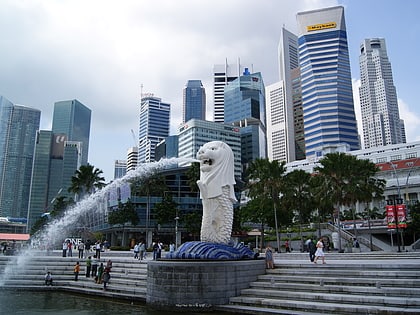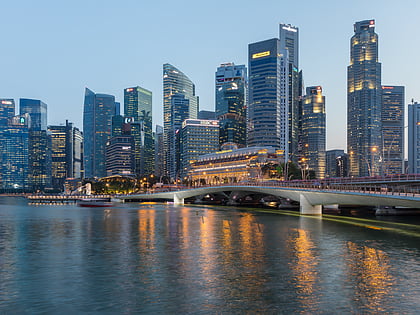Anderson Bridge

Facts and practical information
Spanning the Singapore River, Anderson Bridge is an integral part of Singapore's urban landscape, connecting the civic district to the commercial area of Raffles Place. Completed in 1910, this elegant bridge is named after Sir John Anderson, the Governor of the Straits Settlements from 1904 to 1911.
Anderson Bridge was constructed to alleviate the heavy traffic on Cavenagh Bridge, which was unable to cope with the increasing vehicular loads. Designed by the Municipal Engineer, J. E. A. McNair, and the renowned firm, P&W MacLellan from Glasgow, the bridge is an exquisite example of Edwardian engineering and architecture. Its intricate steelwork and delicate arches are complemented by elaborate lampposts, making it an iconic backdrop for photographs and a witness to Singapore's transformation over the years.
With a length of 70 meters and a width of 28 meters, the bridge was built using steel and is adorned with sophisticated cornices and balustrades. It is a testament to Singapore's colonial past and the city's commitment to preserving its historical infrastructure alongside modern development.
During World War II, Anderson Bridge gained a more somber significance. It was used by the Japanese to transport prisoners-of-war from the docks to the infamous Changi prison. Today, it stands as a silent reminder of the resilience of the Singaporean spirit through the city's darkest times.
Anderson Bridge – popular in the area (distance from the attraction)
Nearby attractions include: Merlion, Esplanade - Theatres on the Bay, Cavenagh Bridge, Asian Civilisations Museum.

















